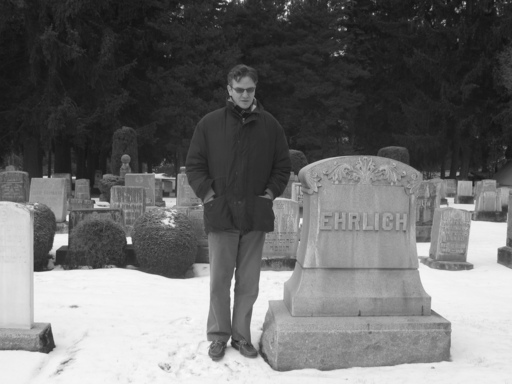A few years ago I read in the newspaper about a company, called DNAPrint Genomics, that for about $300 could analyze your DNA, and tell you where your ancestors came from. I figured that since I knew nothing about where my mother came from it would be worth a try. I sent in a swab of my cheek, and waited for the results.
The results of my DNA analysis arrived in the mail a few weeks later. It showed that I was 95 percent European, and 4 percent Sub-Saharan African; a breakdown of the European part showed that I was 44 percent Northern European, 34 percent Middle Eastern, 22 percent Southeastern European, 0 percent South Asian.
What a surprise! I had no idea where the Sub-Saharan African part came from, but that meant that I had a black ancestor somewhere about five generations back. My father's family was all early American settlers living on the frontier, with no hint of an exposure to Jews.
Since my mother came from small towns in Eastern Washington (as I learned after having her adoption records opened, since she was adopted at birth and died when I was a small child), I had never considered the possibility that she could be Jewish. Since no one knew where she came from, it was of course an area rife for baseless speculation. For instance, my father said she was "Black Norwegian." She might have been black, I said, but not Norwegian. My brother said that if we were living in 19th-century Louisiana, we'd be classified as "colored."
I subsequently read Light in August by William Faulkner with a heightened sense of interest.
I later tracked down the tombstone of a great- great-grandfather in a Jewish cemetery in Spokane, Washington. His descendants had converted to Catholicism and somewhere along the way "forgot" that they were once Jewish. Boy, were they surprised! (By the way, that's me in the picture.)
Later that month, I attended a party at the Georgia Aquarium in Atlanta, Georgia. It was held in conjunction with a scientific meeting I was attending at the convention center in town that week, and was hosted by the psychiatry department at Emory University School of Medicine, where I am a professor. The Georgia Aquarium, only a few years old, is the largest aquarium in the world.
We stood around chatting and drinking cocktails. Immense right whales swam past behind a massive wall of glass, followed by schools of fish of all different colors and sizes. I saw a colleague whom I knew was Jewish, and approached her to bring up my favorite topic of conversation.
"I had a genetic analysis done and did some genealogical research, and found out that I am one third Jewish," I said.
She looked a little taken aback. I guess she didn't peg me as the Jewish type, or maybe she didn't want me as part of her ethnic group.
"Was your mother Jewish?"
"Since she was adopted, I don't know for sure," I replied. "But I think her grandmother was Norwegian."
"Then you aren't really Jewish."
"But a rabbi said, 'Being a learned and scholarly man is a better sign of who is a Jew than who your mother is.'" I was becoming a regular expert on Judaism, after reading Finding Your Jewish Parents and trolling the Internet.
"But that's not how the rules go," she said.
"Actually, those rules are based on the time of the return from exile in Babylon to Jerusalem. Everyone was confused about who was who, so they set up these series of rules that determined how 'Jewish' you were. Men with non-Jewish wives were still considered Jews, just less so than those with Jewish wives. Besides, modern genetic studies show that the original 'Eve' of most Jewish families was an ethnic native of the country they moved to." In other words, Jewish men left Israel, mated with native women, and then started a unique Jewish population group in that country.
She looked at me in a funny way. I went back to the food table and got another appetizer.
(Adapted in part from The Fastest Growing Religion on Earth: How Genealogy Captured America, by Doug Bremner. Photograph source in Viola Vaccarino, used with permission.)
For more by Doug Bremner, click here.
For more on personal health, click here.
